What did Citroën know about the 1935 Hoffman X-8?
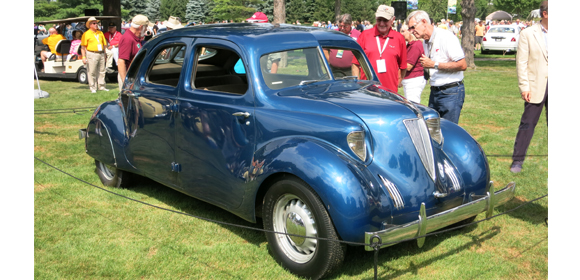
At the 2014 Concours D’Elegance of America event in Plymouth Michigan, a one-of-a-kind of automobile, a 1935 Hoffman X-8 Prototype, was shown that truly peaked our interest. It’s distinctive style, technology and history made it a favourite.
The Hoffman X-8 was designed and built by Detroit-based engineer Roscoe Hoffman, who worked from manufacturers such as Packard, Studebaker, and Ford from the 1910s through the ’50s. It is thought that the X-8 was developed by Hoffman under contract to the Fisher Brothers in the early ’30s, (prior to being purchased by General Motors), and was intended as a promotional prototype to be shown if they successfully acquired Hudson Motors. (Ultimately, in 1954, Hudson merged with Nash-Kelvinator Corporation to form American Motors).
The X-8 was revolutionary in may ways; it was a monocoque design (similar to the Traction Avant) whereby its structure supports loads through its external skin, (similar to an egg shell). And like the Traction, the monocoque body was developed at Budd Automotive in the USA. Hofman was a pioneer of the streamlining movement and its shape is also very streamlined, like a Traction. (We featured an excellent article by Per Åhlström in the summer 2013 issue of CITROËNVIE on the development of the Traction Avant and How American Budd Made Citroën a Forerunner in the European Car Industry.) The X-8 engine was also a marvel. It ports 8 cylinders in an X configuration. Both Hoffman and Henry Ford were proponents of the X-engine, but it is believed to be the only car to ever incorporate one.
Hoffman kept the X-8 until 1961 when he gave it to industrial designer Brooks Stevens. It was originally gunmetal grey but Mr. Stevens had it repined in Packard blue to match all his enclosed cars. The X-8 remained with the Stevens’ family until 2010 when it was acquired by it’s present owner Myron Vernis of Akron Ohio. (Myron has owned Citroëns in the past, most recently a CX Break).
After Myron got the got the X-8, and just by chance, he got a call from a friend who was browsing ebay for old car stuff and came across a listing for an old photo album of the X-8 under construction at Budd. Myron checked out the ad and made the purchase right away! A lucky find!! The photos are most interesting:
They show the unibody underside with passenger floor panels installed and the seat base, the roof section, various body bucks, the door frame section that is integral with the inner front and rear fenders, and in one photo a gentleman who is inspecting the roof on the wooden framework (buck) who could very well be Joseph Ledwinka. Also in the photos; – a drawing of an even more streamlined automobile that bears a strong resemblance to the aerodynamic rework Citroën was doing with the Traction Avant prior to the introduction of the DS.
Looking at the X-8, the front looks like the very rare Scarab Scout designed by William Bushnell Stout. It was really the first minivan. (9 were built, only 5 survive).
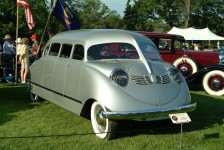
But from the front wheels to the back, one can’t help but see the lines of the Renault 4CV (manufactured from 1947-1961).
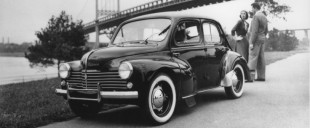
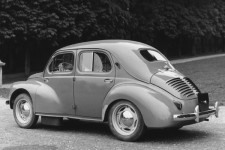
Because the X-8 is a true one-off, there is much speculation about it. Jay Leno has suggested that the three-speed manual transmission looks like it may have been adapted from the transmission of the Cord L-29.
It would appear that Hoffman was serious about taking it into production, where manufacturing efficiencies of components like the X-8’s symmetrical front and rear doors would allow it to be produced cost effectively.
We wonder just how much Citroën knew about the car? André Citroën and Ford knew each other. Could they have spoken about it, or at least the intriguing X-8 engine? Although the X-8 was rear wheel drive Citroën may have dismissed the layout, but since Budd was building its compact monocoque body, would Citroën have been privy as to how it was being constructed? If Citroën were not aware of it, there is certainly enough similarity to the the Renault C4 to suggest that Renault picked up on the X-8 when it was introduced in 1935 and designed their 2CV competitor to be very much like it. It too was unibody, but unlike the Hoffman, Renault’s power plant was a modest 747 cc (later a 760 cc from 1950 onward) rear-mounted four-cylinder engine coupled to a three-speed manual transmission.
A remarkable car in so many aspects, it’s rather a shame that the Hoffman never made it to production.
View the full resolution photo gallery here.
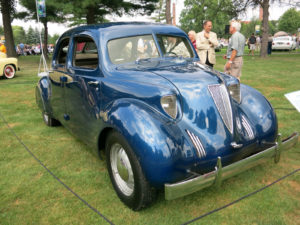
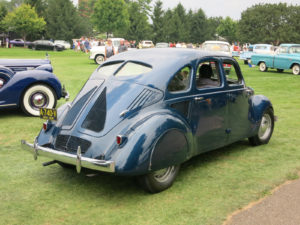
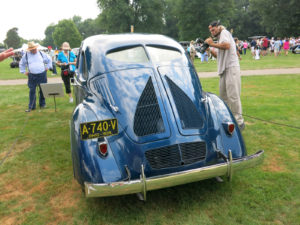
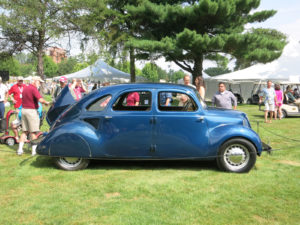
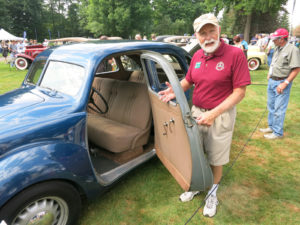
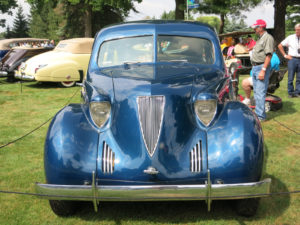
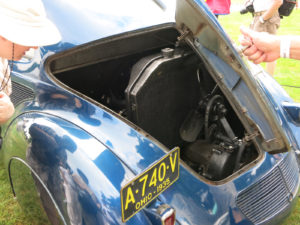
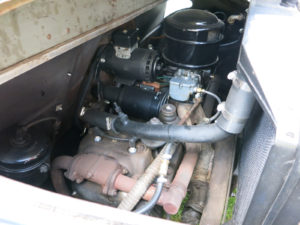
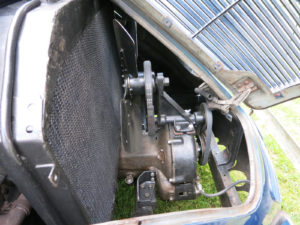
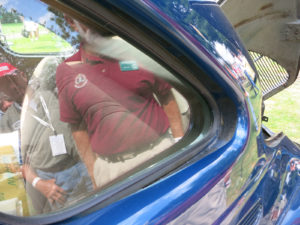

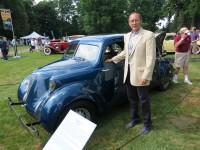
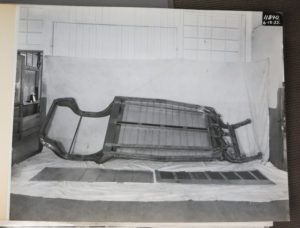
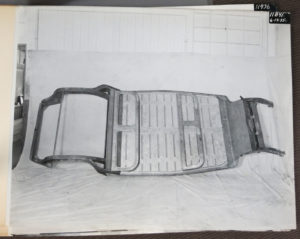
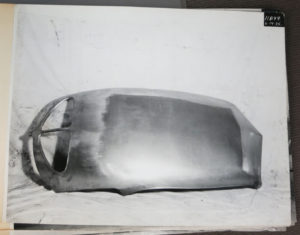
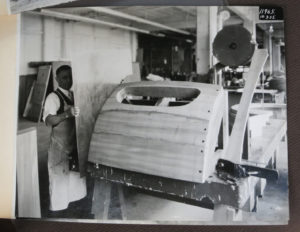
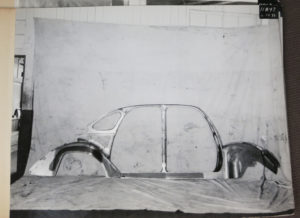

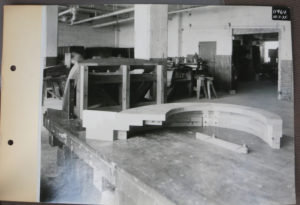
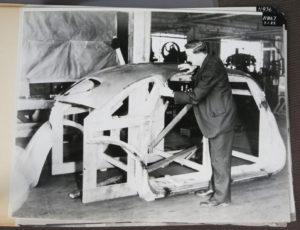
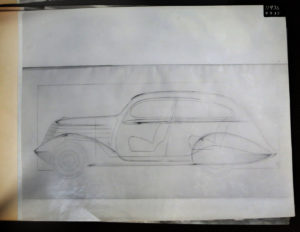

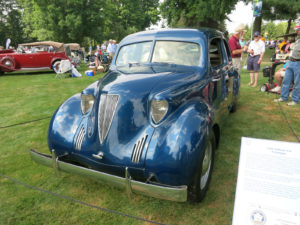

Judging by the photos of Budd’s FWD prototype and it was damn near the TA from the start. Its a great story how Budd created the all steel monocoque – seems no one could make steel sheet wide enough to do a whole body-side, so they invented a way to seam weld narrow sheets together continuously to make wide stuff for a whole body, and that was the foundation for the first Buicks I think, but it was definitely Budd’s US creativity which caught André’s eye, and André went around the world picking people’s brains, as shown by a pic in the Detroit Institute of Art, showing André and Henry Ford in front of ’32 Ford, and you’d swear that André stole the grill and whole front end of that Ford for the TA. André also bought Delco’s license for the TA dizzy, and I’m sure he bought up other technologies.
Further, the exchanges went both ways. Somewhere I learned that Ford found the French using Vanadium steel, which was stronger and tougher than what Ford was using, so Henry swiped that idea for his line. Lots of swapping back then as always – good ideas find their way around. I constantly remind friends that Panhard really started the world’s auto biz – sad no one knows about them anymore.
But did you know who invented the ball bearing? Leonardo – around 1480! I learned that when we visited the Chateau Amboise in the Loire valley after attending the Paris 50th DS Anniversary in “05. I went exploring after the celebration and stumbled on Leonardo’s last home, provided by the Chateau owner. Went into Leonardo’s home, now a museum and in the basement archives found a drawing he’d done – showing EXACTLY the design of the dual-diameter roller bearing used on the Panhard conrods! Again, drawn around 1480!! Egad that guy was an intuitive genius – so Panhard engineers swiped his idea to design a bearing with extremely low sliding friction – smaller diameter rollers separated the larger load-bearing ones, by counter-rotating while separating the load-bearing ones with rolling friction vs sliding. And the Panhard engine was designed in ’47 to do 7000 rpm, and it did that — which is why they had to use torsion bar valve springs – coils simply couldn’t respond fast enough and fatigue-cracked, which torsion bars don’t do as they have no reciprocating mass to deal with. To me, the French deserve some of their “arrogance” as they’ve been smarter than some of the rest of us.